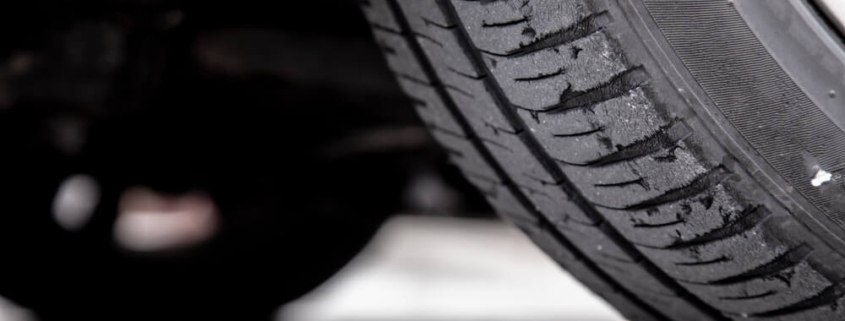Tire Wear — What to Watch Out for With Your Car’s Tires
Your car is one of your most important assets. Whether it’s getting you to the office on time, picking up the kids from daycare, or transporting your pup from their favorite dog park, your vehicle is something that you rely on day in and day out. And while you may know that regular maintenance and care is an important part of being a responsible car owner, there may be something you’re overlooking—your tires. Tire wear and tear is normal, but extreme wear can be dangerous and increase the risk of an accident. Here’s an overview of what you should know about tire wear, causes of uneven wear, and what to watch out for with your car’s tires. If you have any questions about the quality or safety of your tires, it’s recommended that you seek the opinion of a professional.
Why Does Tire Wear Matter?
Having worn tires can be dangerous, and having worn tires is more common than you think. As reported by Consumer Reports, a study conducted by the National Highway Traffic Safety Administration (NHTSA) found that about 50 percent of cars have at least one tire with half-worn tread; about 10 percent of the vehicles in the study had at least one bald tire.
Worn and bald tires can be disastrous on wet roads, where the lack of tread can significantly reduce tires’ grip. When the grooves of tires aren’t deep enough and the tires come in contact with water, the result can be hydroplaning.
And hydroplaning is the only risk of bald or badly worn tires. Other risks of driving on exceptionally worn tires include:
- Difficulty handling a vehicle when driving on snow or ice
- Too much heat buildup on tires as a result of increased friction between tires and the road, which can cause a tire blowout
- Loss of air pressure
- Increased risk of tire tread separation, leading to a tire blowout
- Increase in the amount of time and distance that’s required to come to a complete stop, especially on wet roads
- Decreased fuel efficiency and increased vehicle maintenance costs
- Legal consequences—depending on where you live, you may be in violation of guidelines and requirements relating to tire tread
What’s Considered a Bald Tire?
As stated above, tire wear and tear is perfectly normal and expected. However, it’s important to watch out for exceptionally worn or bald tires. According to the same source cited above, a tire is considered bald when one or more grooves in the tire reach 2/32 of an inch deep (this is compared to 10/32 of an inch deep for brand new tires).
If you’re not an expert when it comes to measuring tire tread depth, here are some tips for knowing whether or not your tires need to be inspected and potentially rotated or even replaced:
- The molded horizontal bars at the base of the grooves in the tires have become flush with the surrounding tread
- Tires are wobbling or feel unstable
- You notice a strange noise—this could be a humming noise or a thumping noise, depending on the issue
- Your tires are vibrating and feel out of balance—if the problem continues even after you have had your tires re-balanced, it’s likely that a tire tread defect has developed that cannot be balanced out or corrected
Keep in mind that tire tread issues are not the only sources of the problems above—inflation and pressure issues, balance issues, and suspension issues can all cause strange sounds and feelings of imbalance or instability, too.
What Causes Tire Wear?
Some tire wear is inevitable as the tires are used over time; however, some tire wear may be exacerbated based on other factors that lead to excessive wear. For example, things that can cause excessive wear include poor wheel alignment, overinflation of tires, underinflation of tires, compromised suspension, and out-of-balance tires. Keep in mind that tires also need to be rotated regularly.
How Often Should I Have My Tires Checked?
The easiest way to know how healthy your tires are is to have them regularly checked by a professional. The recommendation for checking tire pressure—which is something you can do yourself—is once a month. You should have your tires rotated every 5,000 to 7,000 miles, at which time your mechanic can also check your tires for wear and tear.
By keeping your tires in good condition and watching out for excessive wear, you reduce your risk of being involved in a tire-related accident.

 Tire Wear — What to Watch Out for With Your Car’s Tires
Tire Wear — What to Watch Out for With Your Car’s Tires

Leave a Reply
Want to join the discussion?Feel free to contribute!